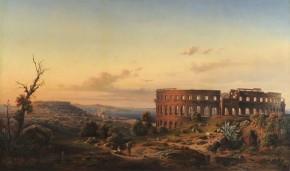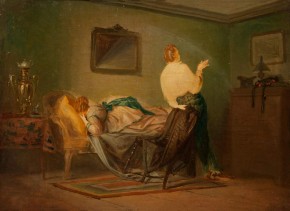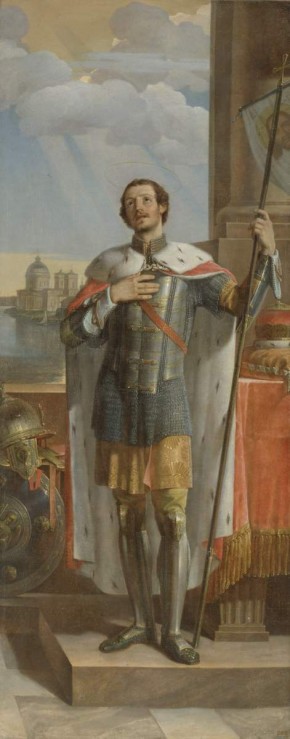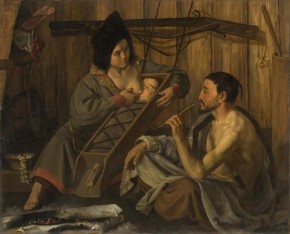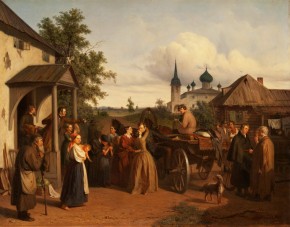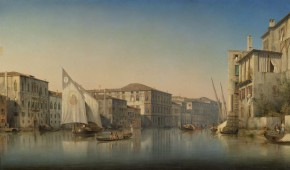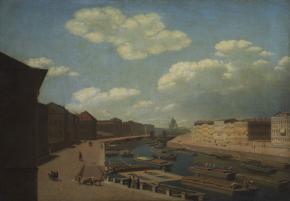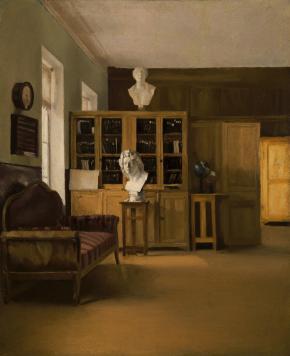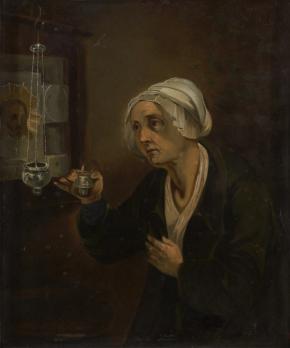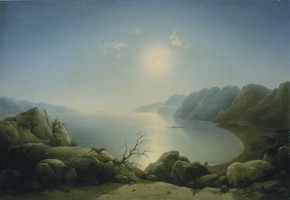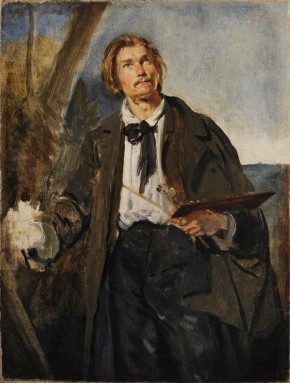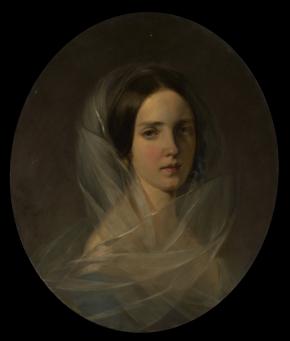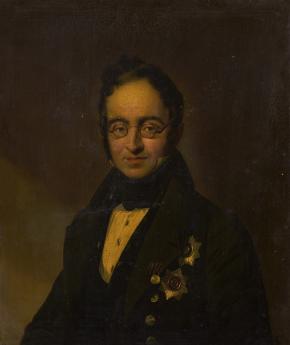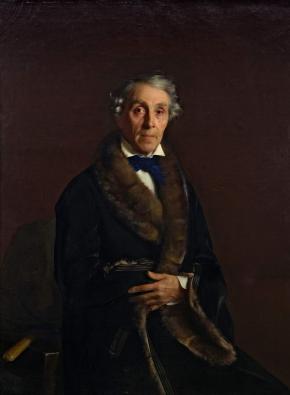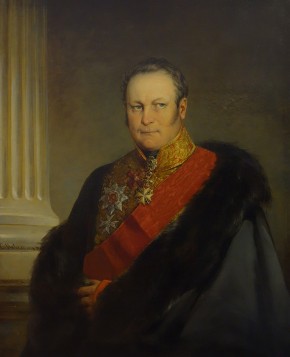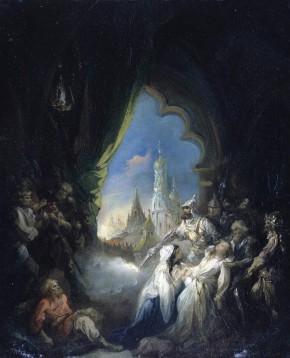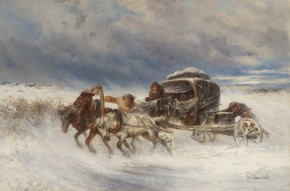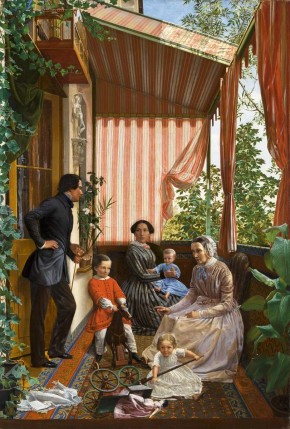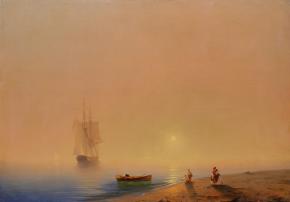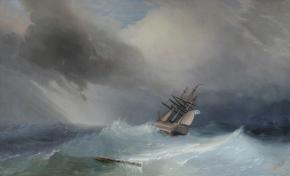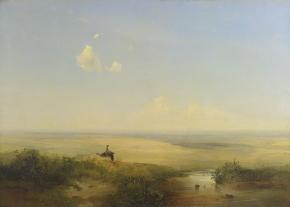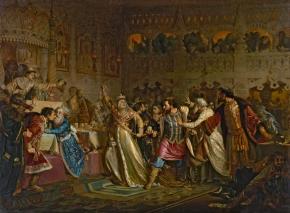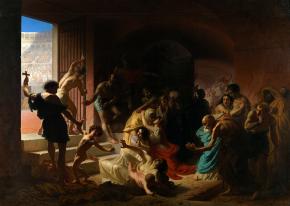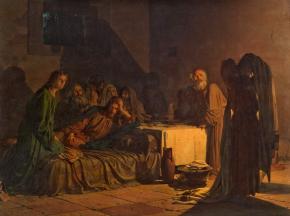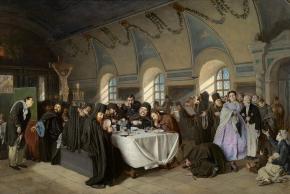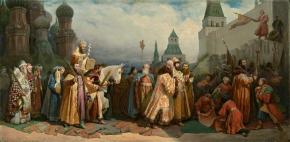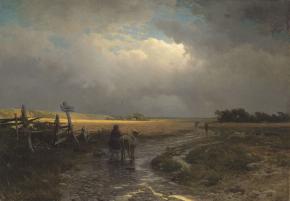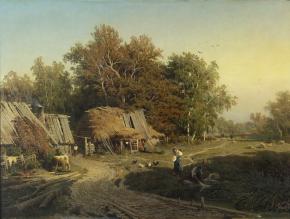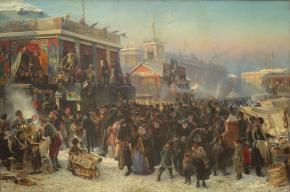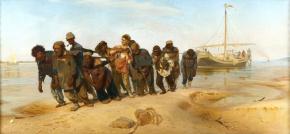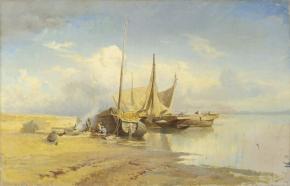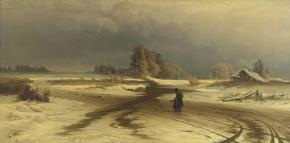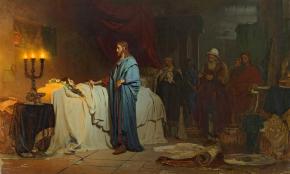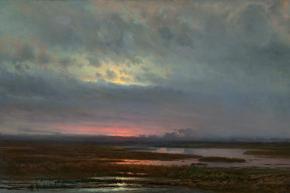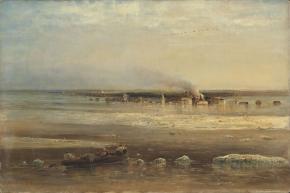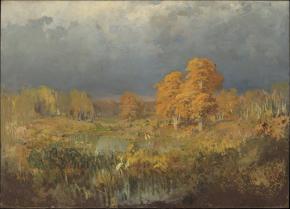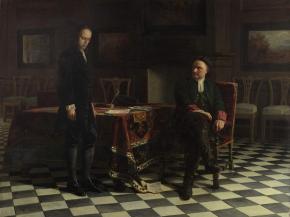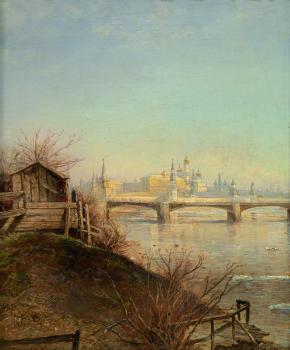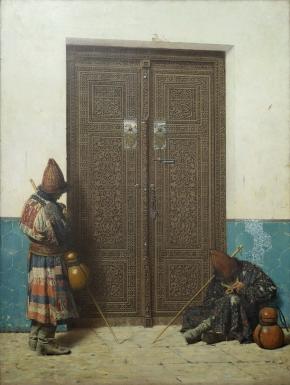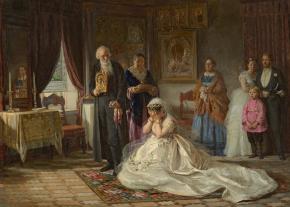Advanced search collections
- Home page
- Online resources
- Collections
- Works of Painting
- The Russian School of Painting (Mid-Nineteenth to Twentieth Centuries)
The Russian School of Painting (Mid-Nineteenth to Twentieth Centuries)
About collection
Even when it first opened back in 1898, the Russian Museum owned many canvases painted by such masters of the second half of the nineteenth century as Hovhannes Aivazovsky, Konstantin Makovsky, Ilya Repin, Vasily Polenov and Vasily Surikov. Although the selection of works before the revolution was often hampered by the conservative tastes of museum officialdom, the collection nevertheless grew in breadth thanks to the efforts of Alexander Benois, Albert Benois, Igor Grabar and Pyotr Neradovsky.
Placing great stress on acquiring works by contemporary artists, the Russian Museum often purchased paintings directly from exhibitions. Works were acquired from the posthumous shows of the works of Isaac Levitan (1901) and Vasily Vereschagin (1905). Other sources were the Travelling Art Exhibitions (Stanislaw Zukowski, Nikolai Kasatkin, Isaac Levitan and Vladimir Makovsky), New Union of Artists (Boris Kustodiev and Nikolai Fokin) and artist's studios (Alexander Golovin and Mikhail Nesterov).
In 1918, the Russian Museum inherited the collection of Prince Vladimir Argutinsky-Dolgorukov, including studies by Mikhail Vrubel and paintings by Konstantin Somov. The Yevgeny Tereschenko collection contained many works by fin-de-siecle artists, among them Mikhail Vrubel's Bogatyr and Six-Winged Seraph. The Alexander Korovin collection included paintings by Valentin Serov, Philipp Malyavin, Mikhail Nesterov, Konstantin Korovin and members of the World of Art, Blue Rose and the Jack of Diamonds.
In 1926, the Russian Museum opened a Department of Modern Art, embracing all twentieth-century movements and associations. The curators were particularly interested in the members of such groups as the Jack of Diamonds, Blue Rose and the Union of Youth. Many canvases were acquired directly from the artists. The Russian Museum inherited over three-hundred canvases -- works by Wassily Kandinsky, Pyotr Konchalovsky, Pyotr Kuznetsov, Kazimir Malevich, Vladimir Tatlin, Robert Falk, Pavel Filonov and Marc Chagall -- when the Institute of Artistic Culture was closed down in 1926. Works by Natalia Goncharova and Aristarkh Lentulov were transferred from the Tretyakov Gallery in Moscow.
The collection of the painting of the second half of the nineteenth and early twentieth centuries continued to grow in the 1930s. Ilya Repin's Centennial Sitting of the State Council was acquired from the Museum of the Revolution. The Tretyakov Gallery donated a number of canvases by masters not fully represented in the Russian Museum, including Vasily Perov's Lonely Guitarist and Portrait of Ivan Turgenev, Nikolai Nevrev's Self-Portrait, Mikhail Vrubel's Flying Demon and Philipp Malyavin's Peasant Women. The Department of Modern Art attempted to reflect the contemporary art process, exhibiting the achievements of Soviet art. In 1932, the Russian Museum held an anniversary exhibition entitled Artists of the RSFSR Over Fifteen Years. More than two thousand works by over three hundred artists were shown in thirty-five rooms. The museum acquired many paintings directly from the exhibition.
The Russian Museum continued to collect works by both contemporary masters and artists who had begun their careers before the revolution. The museum acquired Isaac Brodsky'sParade, Fyodor Bogorodsky's Homeless Waifs, landscapes and portraits by Sergei Gerasimov and canvases by Kuzma Petrov-Vodkin and Alexander Samokhvalov. The Department of Modern Art curated such temporary shows as the First Exhibition of Leningrad Artists (1935). Several of the exhibits were acquired for the museum collection, including Arkady Rylov'sLenin in Razliv, Kuzma Petrov-Vodkin Alarm. 1919 and Vasily Kuptsov's Maxim Gorky ANT-20.
One of the most important events in the post-war history of the Russian Museum was the opening of a permanent exhibition of Soviet art in the Benois Wing. Such works of the 1940's and 1950's as Alexander Deineka's The Defence of Sevastopole, the Kukryniksy trio's Nazis Retreating from Novgorod, Sergei Gerasimov's A Partisan's Mother and Arkady Plastov's A Fascist Flew Past celebrated the victory over Germany in the Second World War. Some of the most outstanding works of the 1960's and 1970's were painted by Helium Korzhev, Victor Ivanov, Pyotr Ossovsky, Pavel Nikonov, Victor Popkov, Yevsei Moiseyenko, Boris Ugarov and Pyotr Fomin.

